Look Who’s Back in the Neighborhood
They used to run from the Vandal Squad in this neighborhood. Now people pay to see their art here.
Through the expansive glass wall on the 6th floor you can look down Kent Avenue to see the spot where a monster pickup truck with a heavy chain tied around a FAILE prayer wheel almost jackknifed on the sidewalk, gave up and sped away. Not that many Brooklynites saw that event in the 2000s – nobody walked here and few people drove through Williamsburg then except truckers looking for street walking ladies wearing high heels and spandex. Oh, and a serial killer.

Now visitors buy tickets to see a circular colonnade of FAILE prayer wheels here at 25 Kent – including the real estate developers and Wall Street professionals who displaced the community of artists whose work made the neighborhood attractive and “edgy”.
Along with Street Artists in this exhibition like Shepard Fairey, Bast, Swoon, Invader, Aiko, Dan Witz, Katsu, 1UP, and Lister, the FAILE duo put completely illegal artworks on walls under cover of night and threat of arrest in this same neighborhood then – transforming it with many others who are not in this show into an open gallery of the streets, placing Williamsburg on the map as New Yorks’ epicenter of the newly emerging Street Art scene.

The Nature of Graffiti and Street Art
As graffiti and Street Art are migratory and necessarily elusive by nature, this story is only one chapter in a volume of history that serious academics are now reconstructing and analyzing. With each passing year and published white paper, the practices of 20th century public mark-making are being examined in greater detail for archiving and for posterity. Not surprisingly, institutions, patrons, collectors, and brands are increasingly interested in this story as well.
When it comes to the anarchic subculture of illegal street art practice and its influence on society, there are non-stop ironies sprayed en route from verboten to Vuitton, and street culture has supercharged the imagination of the mainstream and high culture throughout history – that’s where the best ideas come from sometimes. Many seminal artworks from “the scene”, as it were, represent much more than what you are seeing at first glance. As art and cultural critic Carlo McCormick has described the iconic Shepard Fairey ‘Hope’ image in Art in America, many graffiti and Street Art works saved are “not a fleeting pop-culture sensation but simply the latest crossover hit in a long line of underground classics.”
The wide-ranging survey that is Beyond the Streets makes sure that you know where the roots are, and who many of the pioneers were. It is impossible to tell a complete story that includes scenes as diverse as west coast Chicano muralism, hobo graffiti, hip-hop commercial design, NY downtown artivism, Japanese low/hi contemporary, skateboard, tattoo, early train writing and a current romance with muralism, but BTS at least gives a serious consideration to each and offers you the opportunity to look further into them.

With the help of photography documentation from people like Martha Cooper, Henry Chalfant, Jim Prigoff, Lisa Kahane, Joe Conzo, John Fekner, Bill Daniel, Maripol, and Dash Snow, the crucial importance of this work provides needed interstitial and contextual information that enables myriad stories to be elucidated.
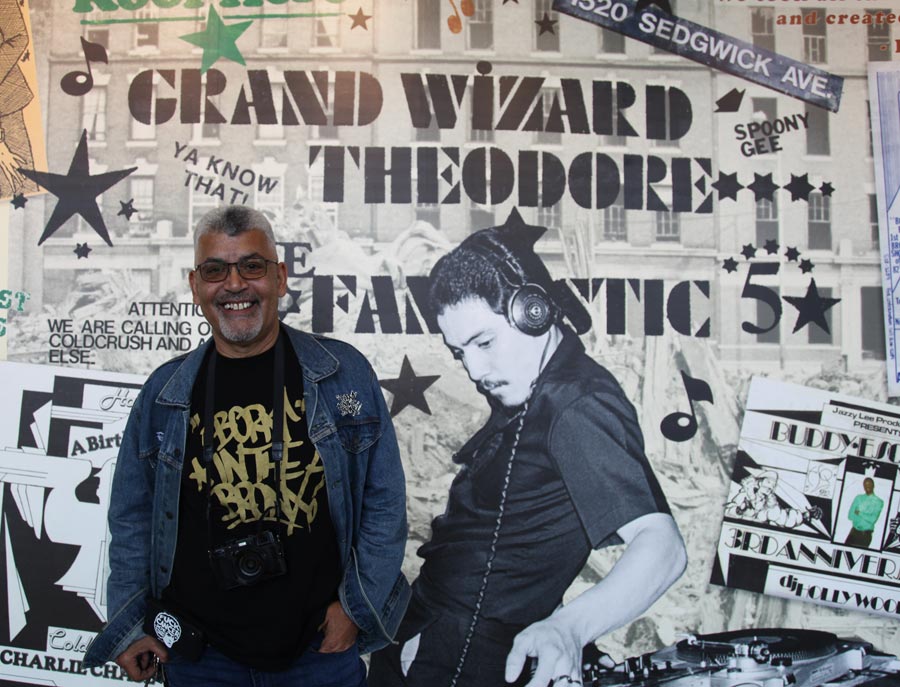
The Scale, The History
Exhaustive, no. Exhausting, possibly. Pace yourself.
“I spent my life surrounded by graffiti and Street Art,” says the shows’ director Roger Gastman “and you could say that I have been obsessed with understanding the culture, its origins, and its evolution. It’s incredible to me how far it has come.”
With 150 artists whose practices span five decades and various (mainly) American subcultures displayed in a maze of new walls in this 100,000 sf, two-floor exhibition, the Beyond the Streets senior curatorial team includes Gastman, filmmaker/ graffiti historian Sacha Jenkins SHR, Juxtapoz Editor in Chief Evan Pricco, and author/ graffiti historian / graffiti writer David CHINO Villorente. Each curator brings core competencies and knowledge of the graffiti scene (Gastman, Jenkins, Villorente) as it has evolved to include the Street Art practice and an eventual move toward contemporary art (Pricco).
“It’s absolutely phenomenal,” says Villorente, who says his history as a graffiti writer compounds the impact for him. “I was glad that the show was coming to New York because I was born and raised in Brooklyn. I couldn’t have imagined it – especially when I think back on when I was writing on the trains and doing illegal graffiti. To have of show of this magnitude is really special.”

“We started writing in ’68 and here we are, fifty-one years later,” says Mike 171 as he gestures toward himself and crew writer SJK 171 when talking about how they began and continued writing their tags on the street in New York City. “This is the history right here,” he says, and you know you are about to be schooled about the plain realities of early graffiti writing. At the opening, you witness each guy tagging in a large dusty window here and realize the love for writing never actually stops.
“We were expressing something that was inside of us,” says SJK 171. “The streets were like ours,” he tells you against a backdrop of their work, Cornbread’s work, and of images full of one color, single line monikers that set the stage for the more colorful, character-driven pieces and burners a decade later, transforming trains into a rolling aesthetic symphony by the mid 1970s.

One of the actual “whole car” writers of that period, Lee “LEE” Quinones, here recreates a “Soul Train” car side on a canvas that looks like it could easily wrap an actual MTA #2-line car that he used to slaughter with cans in the middle of the night at the train yard. When describing the new work he said he was intentionally keeping it simple – perhaps owing the style to his earlier practice.

“I think this is one of Lee’s most amazing pieces,” says Charlie Ahearn, the director of the seminal 1982 “Wild Style” film that Quinones stars in. Ahearn self-produced that film which became an important distillation of the merging of graffiti with hip-hop culture during a pivotal moment in the history of both. Now also a professor of Hip-Hop, art, design, and documentary film making at Pace University, Ahearn is familiar with many of the artists work here, many relationships reaching back decades. “I told Lee that I liked that it was a one-off, that he painted all the color straight off without the embellishment, texturing, and all that stuff.”

Charlie’s twin brother John Ahearn is represented here popping out from walls as well, his sculptures serving as authentic portraits of people you may easily have seen on New York streets over the last four decades. Casted directly on top of the people themselves in a technique he has perfected, the placement of the sculptures gives life to the space.
Star Writers, Immersive Environments, Foundations

The individual clusters of work and canvasses by 1970s-80s train painters like Futura, Crash, Lady Pink, Freedom, Carlos Mare, Blade, Haze, and Daze and next gen graphic painters like Doze Green and Rime are complemented by a number of so-called “immersive” spaces here like the Mission Schools’ Barry McGee storefront with smashed window, and the Australian Pop duo Dabs & Myla’s eye candy floral walls with thousands of artificial fauna created in collaboration with Amelia Posada.

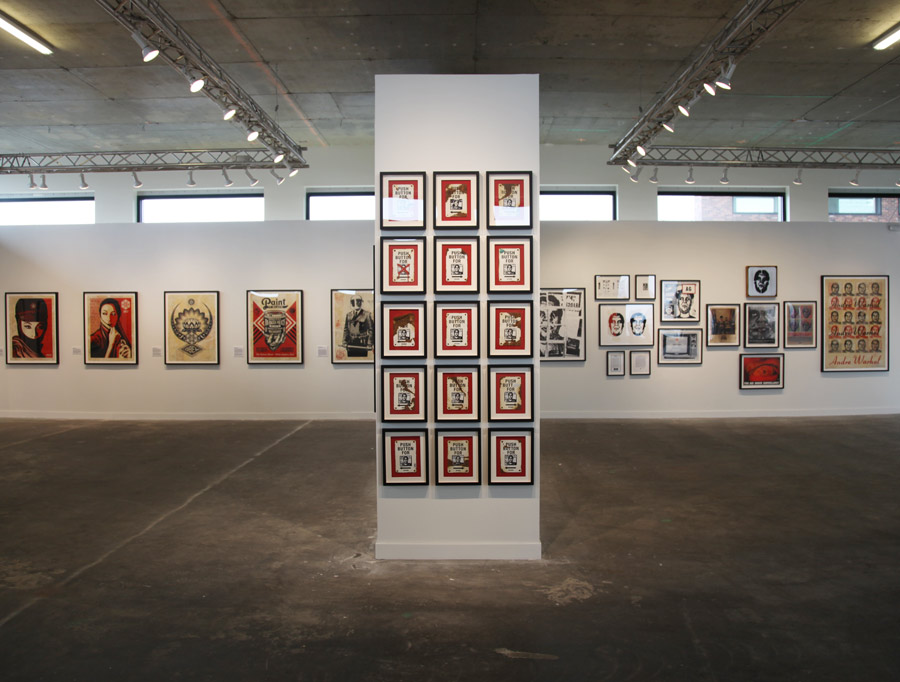
The high-profile graphic activist Shepard Fairey’s 30 year career overview takes a large area and encompasses all elements of his street and studio practice, and Bill Barminski’s cardboard home is open for you to explore with a wry smile, remembering the security room installation he did at Banksy’s Dismaland a couple years earlier.

You’re also treated to a full rolling wall of Craig Stecyk posters that brings you the sun and surf of California skate culture, sculptures by Mr. Cartoon and Risk, a kid-friendly illustrated room with crafting supplies for young fans on tables from HuskMitNavn, and an astute freight train culture educational display by writer/painter/sculptor Tim Conlon (complete with a mid-sized Southern Pacific freight on train tracks he and friends built), prints/photos by historian Bill Daniel, and original drawings by the man some call the King of Hobo Art, buZ blurr.

“These are a self portrait as predicated on a first Bozo Texino person and I kind of changed the image around,” says Mr. blurr, a legendary figure in denim overalls, as he patiently describes his classic tag image of a railway cowboy.
“It is a writer motif – the pipe smoke is going up and then it is trailing back to signify movement as the train goes down the track,” he says. “I worked in the train yards and my job was as a brakeman. I had a little free time so I started making drawings. I made my first one on November 11, 1971,” he says as he recalls the state of mind that he was in at the time as he began to tag freights with the image and text that came to him clearly – and may have perplexed other travellers.

“They came from a confused state. I was questioning everything. I was putting kind of cryptic messages under my drawings. It was anybody’s guess as to its literal interpretation. I addressed some of them up to specific people but whether they saw them or responded to them, I wouldn’t have any idea.”

“When it’s shipped in the crate its 550 pounds,” says Conlon as he stands by the 3-foot high freight car re-creation on tracks and ties that is hit with a couple of wild and colorful graffiti burners. “Here I’m going to show you something,” he says as he pulls back the roof to reveal the narrow coffin interior in rusted red. “So I’m going to hide some beer in here during the opening party. This is like the fifth one of these I’ve made,” and he proudly confides that one lives in the house of Robert Downey Jr.
Digging Deep to Take Risks
Not content to rest on laurels and previous formulas of success, the show keeps a freshness by presenting known entities pushing themselves further and taking creative risks; a reflection of that spirit of experimentation we have always prized on the street.
Graffiti writer Earsnot from Irak crew, now known professionally as Kunle Martin, said he had been making work for the gallery containing elements of graffiti, but felt they were too “safe”.

“Then my friend Dan said ‘you should go back to doing drawings,’” he says as he stands before figurative canvasses in black and white on cardboard. “I said ‘I can’t! It’s too hard! But eventually I began working in my studio five days a week, and I made enough for a show.”
Reflective of the attitude of Gastman toward artists in the community, he told Martin that if he made enough of them, he could place them in this show. “I think he was happy to hear that I was in my studio working. He’s been very supportive of it.”

A fluorescent color-drenched graphic/photographic collage style is featured with plenty of space in large frames from Chicago’s Pose, who says he is letting photography and geometry lead him away from his previous pop collage style that may have reminded many of Lichtenstein. His inspiration here comes from his research into early photos of graffiti writers running from police “I was obsessed with John Naars photos and I have usually Norman Mailer as in inspiration. Some of these photo references are from the Philadelphia Inquirer,” he says.


New York’s Eric Haze also dares himself to take a new direction with three canvasses featuring a refracted piecing-together of imagery and memories of this city in monochrome. Based on black and white scenes of the city by photographer and NYC taxi driver Matt Weber, the scenes capture aspects that are culled from imagination and impression. The centerpiece canvas captures an iconic piece of the Williamsburg waterfront that has been removed in the last few years by developers; the signage of the old Domino Sugar factory by the Williamsburg Bridge.

Mr. Haze said he meant it as a gift and tribute to his wife, actress and longtime resident of the neighborhood, Rosie Perez who used to see it along Kent Avenue as a kid. “He’s not afraid to take risks. He’s not afraid to go in the studio and express what’s inside of him. When he brought me to the studio, he says, ‘I have a surprise for you’,” she remembers. “I saw the beginnings of the Domino painting and I was stunned into silence and I got teary-eyed.”

Beyond Labels
An expanded version of the show that first mounted in Los Angeles last year, the collection is focused a great deal on the American history of graffiti with a balance of East/West coast graffiti history – in a way that may remind you of 2011’s “Art in the Streets” at LA MoCA. That makes sense, considering Gastman co-curated that show as well.
“It’s both a historical and current look at where the culture went and where it started and how widespread it is,” says co-curator Evan Pricco, who perhaps provides a lynchpin view toward the big name Street Artists who continued to push expectations in the 2000’s on streets and in commercial galleries around the world. “With the space spread over two floors it has a way better curatorial sense. I also think it does compete with museums because it shows that this kind of work is on the same level. You kind of have to present it in a way that feels very institutional and archival.”
So is Beyond the Streets a graffiti show or a Street Art show or a contemporary art show? For artist Kenny Scharf, who first gained attention during the heyday of Downtown Manhattan’s art scene that benefitted from an interlude where rents were dirt cheap and Wall Street was on a cocaine high, there is no need to categorize what kind of art this is.

“You know I never liked labels or titles anyway so even back in the early 80s I was pegged like ‘oh you’re a graffiti artist,’” he says. “People feel the need to title and label so I’ll let them to continue to do that but I don’t fit into any of them and I don’t want to. I want to fit into all of them and none of them.”
Beyond the Streets opened June 21 and continues through the summer.



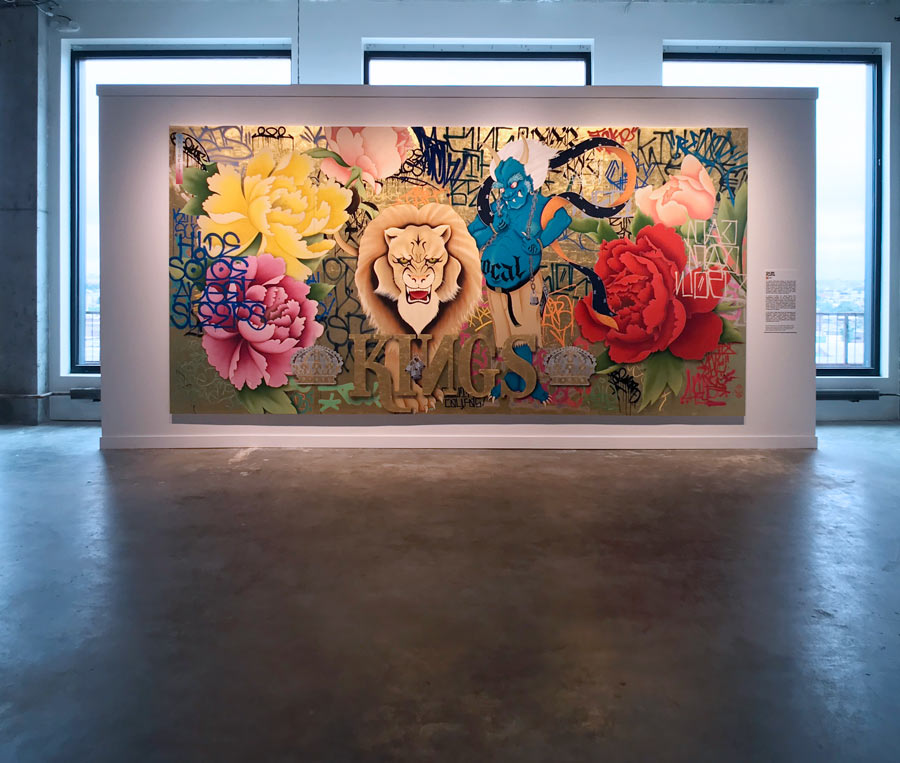

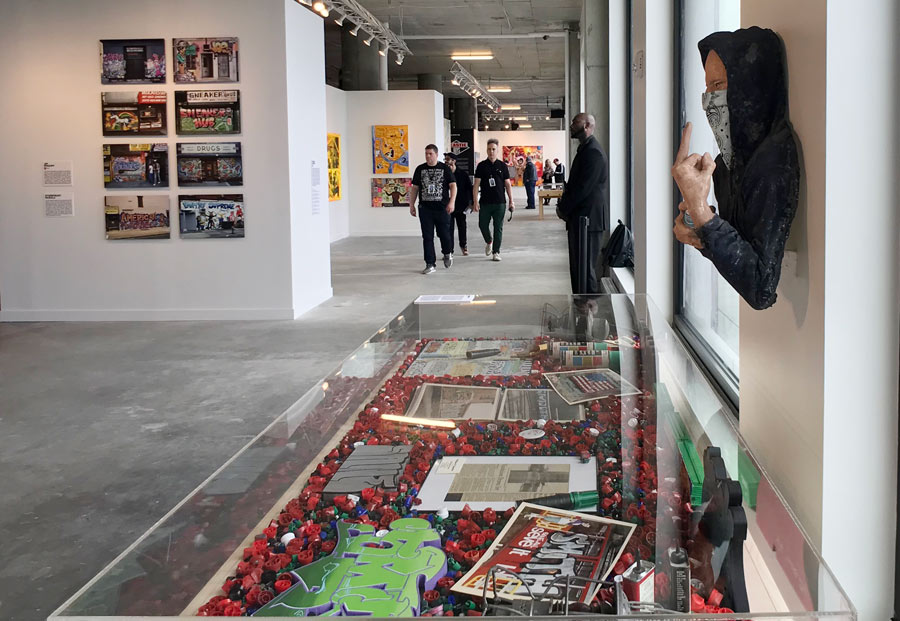

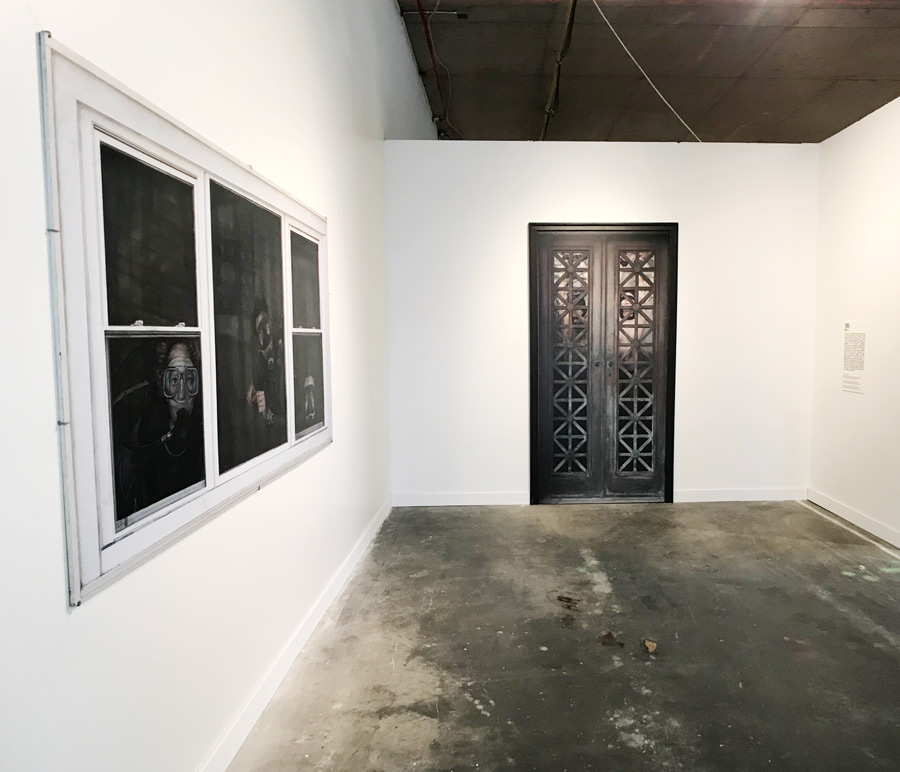
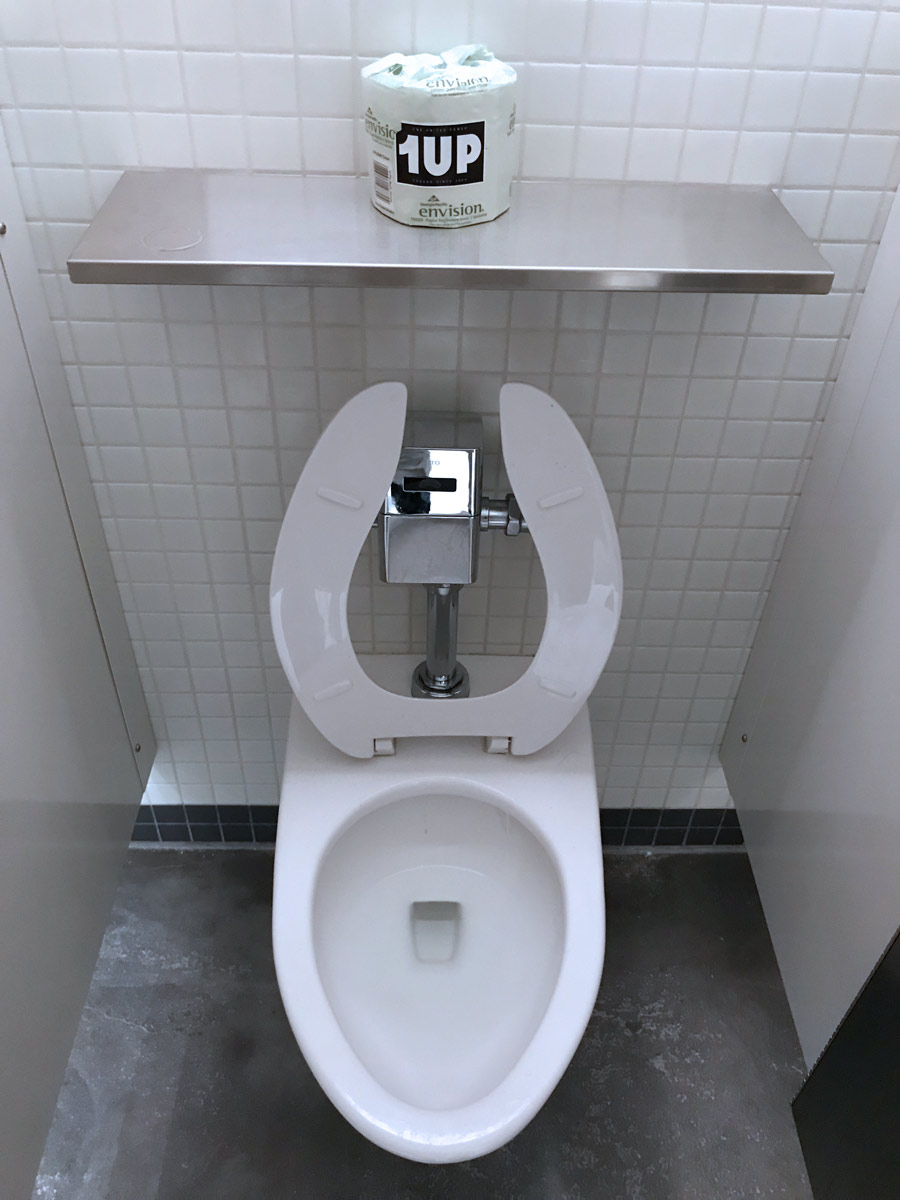













Martha Cooper’s work as exhibited at Beyond The Streets New York
Beyond The
Other Articles You May Like from BSA:
Welcome to BSA Images of the Week! Welcome to October - the time when the leaves turn yellow and orange and when your local pharmacy is selling Halloween candy and Christmas decorations because w...
Photographer Martha Cooper just returned to New York from Hawaiian paradise and the 5th Pow! Wow! Festival, which this year featured an unprecedented number of artist that some estimate at 100. Natur...
The brilliant illustrator of fantasy and firey allegory, BLU, championed the cause of the Rog Factory squat in Ljubljana, Slovenia, in 2016 with a centrally framed handgun in pink and red. In that he...
Mint & Serf (Mirf), the New York City based Street Art Collective give a nod to the era of mega clubs as they proudly unveil an ambitious new nightlife project with the opening of District 36.
What the hell just happened? Has it been a year? Or has it been 10 years? Or just one long nightmare/daymare? Or has it been 10 years? Did we already ask that? In March 2020 we awoke to a world t...
 BROOKLYN STREET ART LOVES YOU MORE EVERY DAY
BROOKLYN STREET ART LOVES YOU MORE EVERY DAY










